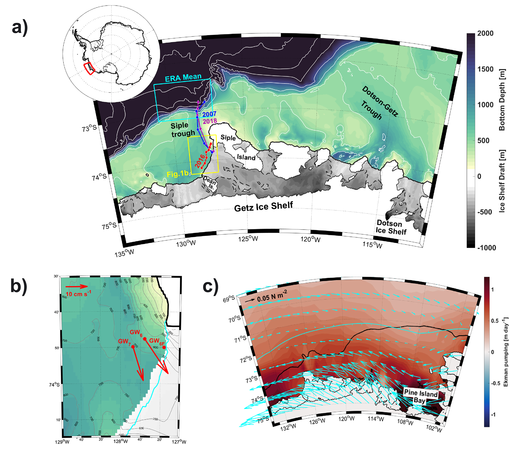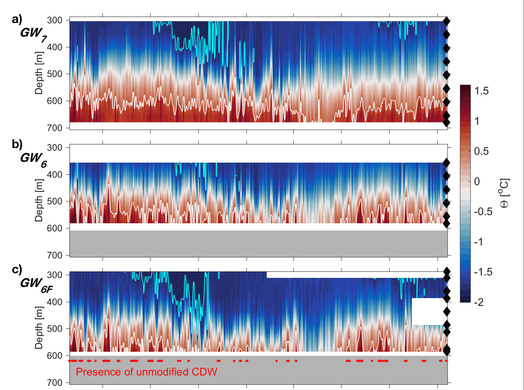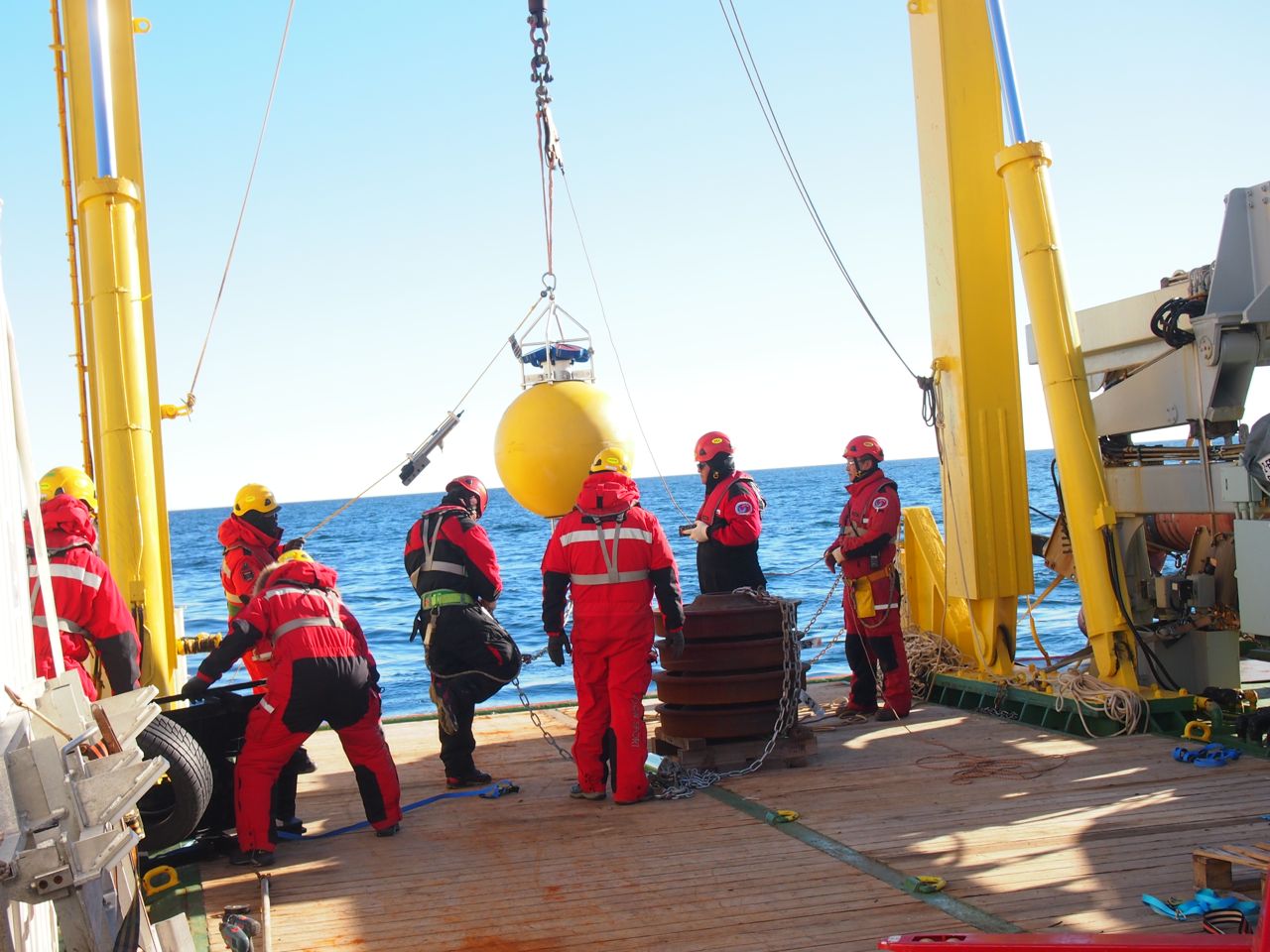 Guest blog by Karen Assmann
Guest blog by Karen Assmann
Maybe you remember the blog posts I wrote a year ago about the cruise to the Amundsen Sea onboard the South Korean icebreaker Araon? (If not, see here!) Maybe you have even been wondering what we have been doing with all the data we recovered? About two weeks ago we had our first paper using these data published in a journal called Geophysical Research Letters: Warm Circumpolar Deep Water at the Western Getz Ice Shelf Front, Antarctica
Our two years of data show that there is a constant flow of warm water towards the western Getz Ice shelf and that this flow is pretty fast (20 cm/s). The distance from the shelf break, where the warm water comes from, to the ice shelf front is just 110 km so it takes only about a week to get from the deep ocean basin to the ice shelf front and the water does not have time to cool down much along its way. Temperatures in the inflow reach up to 1.59°C at the ice shelf front which makes this water the warmest that has been observed at any ice shelf front in the Amundsen Sea. The water reaching the Getz ice shelf cavity is hence warmer than the water reaching the fast melting Pine Island and Thwaites Ice Shelves further east!
To investigate what drives changes in the temperature and thickness of the warm bottom layer, we compared our ocean observations to wind data from the area and found that stronger easterly winds in the area make it harder for the warm water to reach the ice shelf front, because they depress the warm bottom layer over the shelf break. Climate projections indicate that these easterlies will weaken in future, making it easier for the warm water to get to the ice shelf base. We also find that gradients in the wind field over the shelf break control the thickness of the warm layer on longer time scales. This is a mechanism that previous studies have used to link changes in the wind field to changes in ice shelf flow velocities and melt rates, but these studies have lacked oceanic observations to support their hypothesis. Our observations close that gap and prove that the ocean does indeed react in the way that these studies imply
There is more science using these and the other mooring at the western Getz Ice Shelf moorings in the pipeline, so watch this space!

 This is the Getz ice shelf in the Amundsen Sea! Our moorings were placed within the yellow Box, and the observed mean current is shown in (b). Panel (c) show the mean wind field.
This is the Getz ice shelf in the Amundsen Sea! Our moorings were placed within the yellow Box, and the observed mean current is shown in (b). Panel (c) show the mean wind field.

